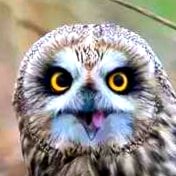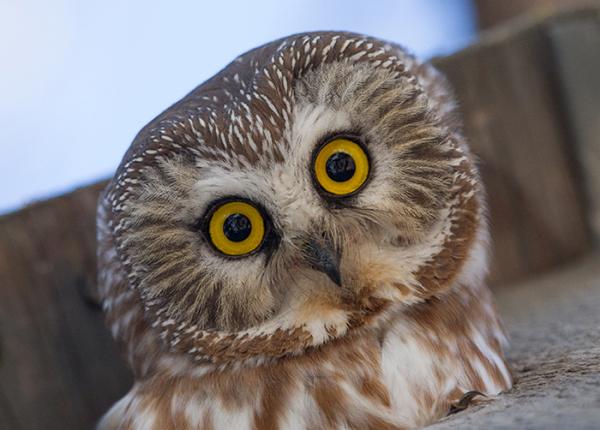I normally don’t share anything I don’t like here, but after reading these 2 pieces, I was left feeling very conflicted, so I thought I might get some opinions on it.
This person seems to be very qualified when it comes to all things forestry, and I don’t think anyone could argue his credentials.
I thought I agreed with his overall point, but after reading his reasoning, it makes me question my choice. Perhaps I was being too pessimistic in giving up on the Spotted Owl. I don’t think regulation will come to the timber industry due to there being too much money left in harvesting old growth.
With that option off the table, the only realistic thing to do seemed to let the Spotted and Barred Owls find a consistence, even if that meant the Spotted Owl would lose in the long run.
But I disagree with this guy’s reasoning so much, it really bothers me. I don’t know if the US or Canada will ever have leaders that will care about our environment over money, but it doesn’t feel right to throw in the towel on the Spotted Owl.
If you read this, and especially the linked PDF article that goes into more detail that almost got him “canceled,” in curious as to your takeaways.
From Capital Press
Commentary: Hoot owl biology and the U.S. government By Bob Zybach
In Charles Darwin’s 1859 “Origin of Species,” he describes “race” as members of the same species that typically develop different characteristics when separated geographically over time. Human races were the common focus and “scientific” discussions reflected the bigoted prejudices of that time.
In 1942 a German ornithologist, Ernst Mayr, defined animal species as “genetically distinct populations of individuals” capable of mating with one another and producing viable offspring.
These were the definitions my classmates and I were taught in public grade schools in the 1950s, and in public high schools and colleges in the 1960s.
When the Endangered Species Act (ESA) was adopted in 1973, 36 birds, 22 fish, 14 mammals, six reptiles and six amphibians were initially listed: 84 animals in all, and each a distinct species.
Today there are more than 1,770 designated ESA species listed as threatened or endangered in the U.S., and more than 635 foreign species: 2,400 total.
Of these totals, only 57 species that have been considered “recovered” and 11 considered “extinct” were delisted in the past 51 years. This is a success rate of less than 3%; and an average of listing more than 47 new ESA species a year, while removing only one.
The cost to taxpayers can be measured in the billions or trillions of dollars, depending on the accounting method.
The barred owl is the most common brown-eyed owl in North America and has been popularly known as a “hoot owl” for many generations.
Sometime by the 1950s these birds began expanding their range into the Pacific Northwest and breeding with native spotted owls, producing viable young called “sparred owls.”
The spotted owl had been listed under the ESA as threatened in 1990 and the supposed cause of its low population numbers was claimed to be logging. This determination resulted in dozens of successful “environmental” lawsuits being filed from that time to the present with the specific focus of stopping the sale and harvesting of commercial timber, and particularly on public forestlands.
In 2007 U.S. Fish and Wildlife Service hunters began systematically killing barred owls and sparred owls on an “experimental” basis. The sole purpose was to control the breeding process in order to maintain genetic purity. Only these were wild owls, not domestic plants or animals, and ethical concerns were raised immediately. And then ignored.
A little over 10 years ago I wrote about this problem in a lengthy article that I also posted to a national blog of (mostly) retired U.S. Forest Service professionals for discussion. I then presented this perspective in two lectures to graduate students, staff and professors at the College of Forestry and then the Department of Fish and Wildlife at Oregon State University.
These efforts resulted in some meaningful discussions in the public forums, but immediate and adversarial claims of being a racist during my university lectures. Which was my whole point.
I had used polar opposites of the human species — a Pygmy and a Swede — to compare their differences in physiology, vocalizations, diet, coloration, appearance and preferred habitat with those of spotted owls and barred owls. I was challenging current scientific theory and government policies with documentation, but my work could be safely ignored because someone called me a name.
The cost to U.S. society for the purpose of keeping these brown-eyed cousins of owls from having sex has simply been too great for too many years.
The massive economic damage from spotted owl lawsuits — almost entirely funded by taxpayers — is generally well recognized: tens of thousands of lost jobs in the forest industry and U.S. Forest Service; hundreds of sawmill closures; billions of dollars in lost revenues to the U.S. Treasury, states, counties and schools; and the resulting degradation of our rural communities, roads, parks and services.
And, as predicted, millions of acres of so-called “spotted owl critical habitat” have gone up in flames, killing millions of wildlife and polluting the air with deadly smoke.
My thought remains that we need to stop playing God with hoot owls and let nature take its course. As Darwin pointed out, nature favors the “survival of the fittest,” and in this instance that seems to be sparred owls.


Erm, the whole article just seems like propaganda to argue for the rights of polluting industries. It feels very “won’t anyone think of the billionaries” in tone.
Humans have not stopped the devastating environmental damage they have been causing. There is no more natural selection in the environment. Not that the process doesn’t still happen. But it’s in no way ‘natural’ because humans have changed the environments so drastically everything else just limps to catch up.
It also reminds me of like rabbits released in Australia causing major problems. And deer running wild in America because there’s no apex predators to keep the population down. Humans caused the issues and now interventions are mitigation because they can’t do anything about it.
Also reads like “what we’re doing isn’t working so obviously it’s wrong and we should just throw our hands up”. Like oil executives saying we’re never gonna be able to clean up the environment so why bother. And plz don’t jail me kthx.
The only thing I’m willing to concede is the species thing because I’m not familiar with species classification. Is this closer to breeds of dogs or wolves and dogs? Some breeds of dogs have gone extinct with time but humans did actively design breeds. I would argue wolves are a seperate species though despite cross breeding possibilities. There’s more to it than just being able to successfully breed imho. (Also the fact that he decided on a completely racist analogy when even within the article he had so many better options makes me give the side eye. Like he just wanted an avenue to say this racist thing and couch it in ‘science’.)
I think that’s why this article makes you so uncomfortable. It’s using the veneer of science to argue for a point rather than proving via data. Kinda like flat earthers using the scientific method to try to prove the Earth is flat but the proof isn’t there but they somehow argue it totally was proof to them. Lots of convincing words and language but nothing of substance beyond listen to me. Bunch of woe is me in there too.
Anyway, that’s just my layman rambling. I support conservation efforts because my view is that humans are the ones that fucked up the environment and have the responsibility to save as many animals as possible. If you want to start arguing feasibility and profitability we’re in a different conversation.
Thank you for reading and replying! I felt there was a lot to discuss, but I knew it was a lot to read and respond to, so I saved it for the weekend.
It disappointed me that it seemed someone with so much experience and education still seemed to put business over the environment. He should know the old growth and rainforest is not replaceable. He comes off as more someone watching over a cattle feed lot than a park ranger watching over a national park.
The Spotted and Barred had been kept separate until this past century, but first practices have shrunk the Spotted territory, but provided a way for the Barred to enter those same areas.
I get what he was going for with his analogy, but after people asked him to knock it off and he still felt the need to continue with it, for another decade, makes it seem intentional he’s using it to rile people up.
Until we set places off limits to harvest, and close loopholes to access, more forests and animals are going to suffer and fade into history.
Yeah. If something doesn’t seem to be working to stated goals, you should tweak the method not throw up your hands and give up. Conservation efforts can and do bear fruit with painstaking effort. Might seem like rolling that stone uphill endlessly but it’s the job.
As you point out, there has already been an immense impact caused by humans. Like irreversible that’s gone forever impact. We’re already stuck in damage control and frankly should hold on to every inch we can. I scoff at carbon neutral propaganda and we plant a tree for every one we cut stuff a lot because often it’s just greenwashing. Trees take decades to grow. Forests take centuries to mature. That doesn’t go away with you planting random saplings. Sometimes those are even non native saplings. And that’s not even considering the amount of animals chased away from clearing the areas in the first place. Those don’t just come back like a video game if you plant the trees.
Also doctors and nurses can be anti-vaxxers. Basically, there are no jobs or professions free from the fact that there have always been dumb humans. Credentials just mean someone managed to pass the exams. Nothing more nothing less.
As a whole I still have hope for the human race but boy are we a self defeating species at times.
Very true. Planting a non-native monoculture forest isn’t good for very much other than saying you planted something. It’s still an ecological desert that doesn’t really support life in a holistic way. A healthy forest had tons of trees and plants in various states of growth and decay, providing different types of animal shelter or food.
It will take generations of people who will literally plant the trees of which they themselves will never sit in their shade, as the old saying goes.
I feel bad for the future generations who will be paying the price for what has been kicked down the road for them by long dead individuals with selfish goals. It’s scary to think about losing animals in our lifetime that aren’t some exciting things we’ve only seen in books or zoos, but regular backyard creatures not existing anymore.